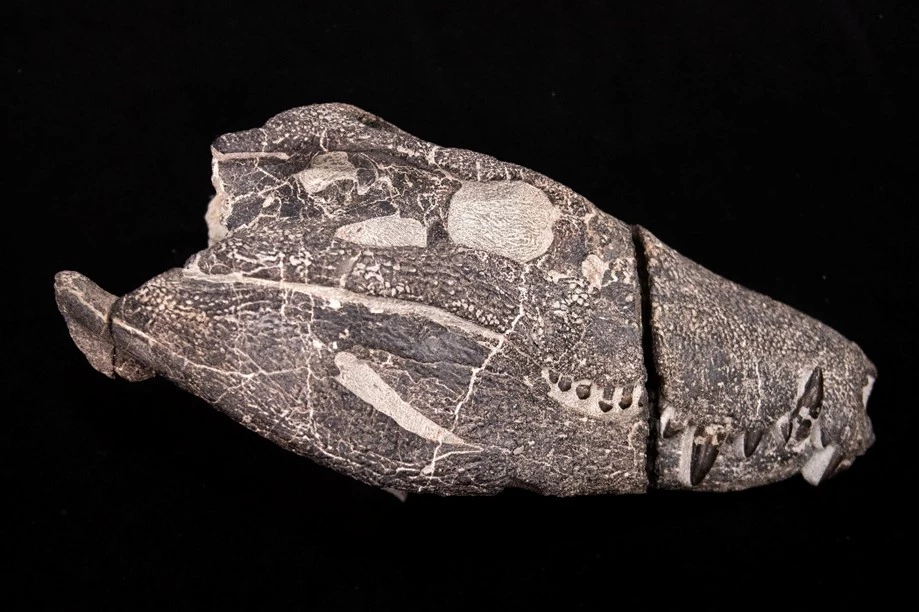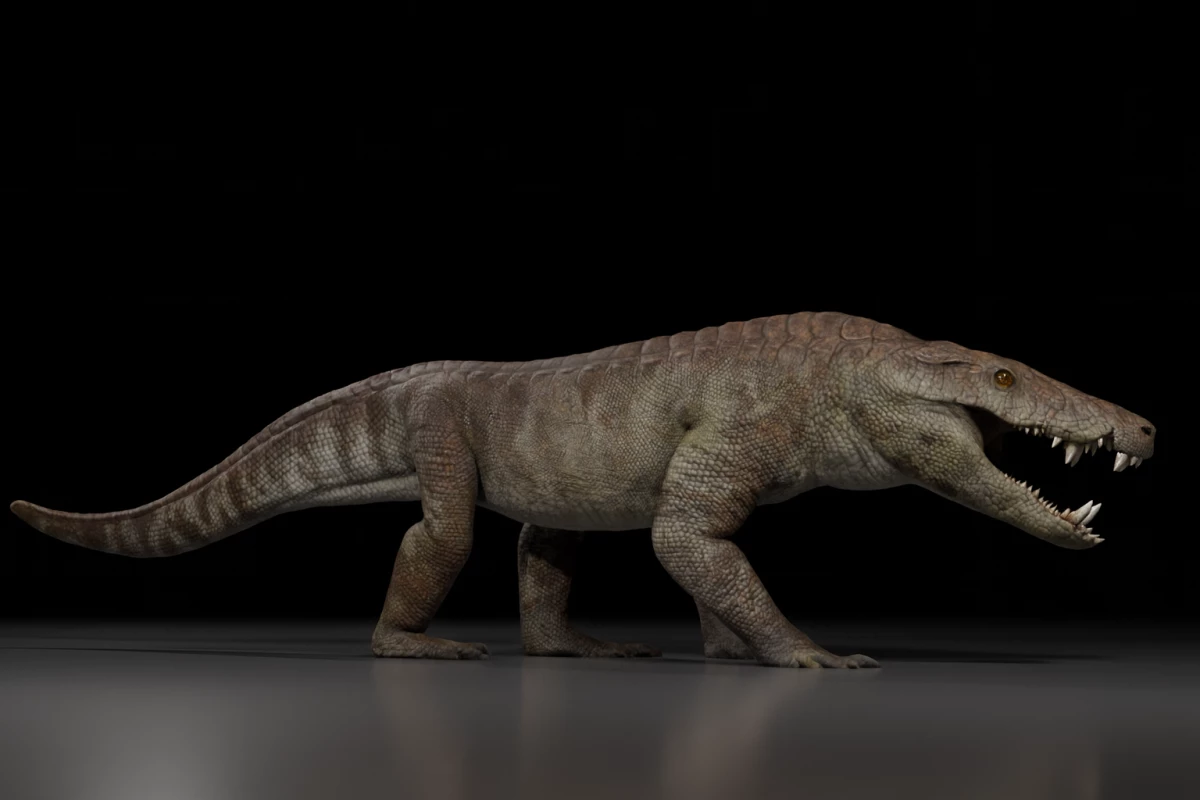A remarkably intact skeleton of a giant meat-eating crocodile relative has been unearthed in South America, providing scientists with a vivid picture of its physiology and behavior when it roamed the land 70 million years ago, chasing down its prey – which included medium-sized dinosaurs.
An international team of paleontologists led by scientists from Argentina's Museo Argentino de Ciencias Naturales (MACN) have described the new species, which lived among dinosaurs, as well as giant snakes, turtles, early birds and small mammals, shortly before an asteroid brought the Cretaceous period to an end. Unearthed near El Calafate in Argentina, this skeleton – including an almost complete skull and jaws – has given scientists their best window yet into the lives of this group of extinct crocodyliforms known as peirosaurids.
The scientists believe that the newly named Kostensuchus atrox was a formidable land predator that grew to about 3.5 m (11.5 ft) in length and weighed around 250 kg (551 lb). Its short, deep skull anchored powerful jaw muscles, and its blade-like, serrated teeth – twice the size of those in earlier, smaller crocodyliforms – were built for slicing flesh rather than gripping it. These features mark it as a "hypercarnivore," a predator that lived almost entirely on meat.

The name Kostensuchus atrox is a nod to both Patagonian heritage and ancient mythology: "Kosten" comes from the Aonikenk (Tehuelche) word for the powerful Patagonian wind, while "suchus" is derived from Souchos, the Greek name for the crocodile-headed Egyptian god Sebek. Atrox, meanwhile, translates as "harsh" in Greek. In addition to this specimen being an entirely new species, Kostensuchus is also a novel genus, making this discovery even more important to the evolutionary tree.
Peirosaurids are an extinct family of crocodyliforms – close cousins of today’s crocodiles – that lived only during the Cretaceous period in South America, Africa and Madagascar. Until now, most have been described from scraps of jaw or isolated teeth, leaving their full appearance and lifestyle not well understood. The new specimen preserves an articulated skeleton with skull and forebody, making it the best example of its kind ever found.
"Although broad-snouted peirosaurids are potentially closely related to each other, so far, these taxa have been rarely included in phylogenetic analyses, likely due to the incompleteness of their remains," the researchers noted. "The discovery of Kostensusuchus with an exquisitely preserved skull allows understanding for the first time this morphological type as well as testing the relationships of broad snouted peirosaurids within the context of other members of this clade."
Comparing the anatomy of K. atrox with other crocodyliforms, the researchers believe it was a predator well adapted for life on land. Unlike modern crocodiles, which lie in wait to grab and drown their pray, this beast possessed the kind of build and the dentition for tackling animals head-on and tearing through hide and flesh. Its strong shoulders and robust skull suggest it was an active hunter that could grapple with struggling catches. And, in Patagonia at the time, that was dinosaurs – from medium-sized herbivores to smaller carnivores – whose fossils have also been unearthed in the same rock layers.
This discovery, from the Maastrichtian Chorrillo Formation, helps paint a richer picture of Patagonia’s ecosystems at the end of the Cretaceous period. Dinosaurs may have been the most visible predators, but crocodyliforms like K. atrox would have shared their territory – and most likely competed for pray – at the top of the food chain.
"The discovery of Kostensuchus atrox considerably expands the knowledge about the anatomy of broad-snouted peirosaurids, previously known from extremely fragmentary remains from South America and Madagascar," the scientists noted. "Kostensuchus is retrieved as part of a clade of robust, broad-snouted peirosaurids that existed at the end of the Cretaceous across various regions of Gondwana. The new anatomical information provided by Kostensuchus sheds light on both the similarities and differences between broad-snouted peirosaurids and baurusuchids, the other crocodyliform clade that independently evolved into apex predators during the Cretaceous of Gondwana."
Crocodyliforms once occupied a diverse range of niches – from specialized hunters like K. atrox to fish-eaters and plant-foragers. Peirosaurids represent one of the lost branches of this tree, wiped out along with the non-avian dinosaurs 66 million years ago. Today’s crocodiles, alligators and gharials are the last survivors of a much more varied lineage.
The new specimen not only provides a benchmark for scientists to compare other fossils against, but it sheds new light on how ancient crocs were diversifying into giant, meat-eating specialists just before their sudden extinction.
The study was published in the journal PLOS One.
Source: Museo Argentino de Ciencias Naturales via Scimex





